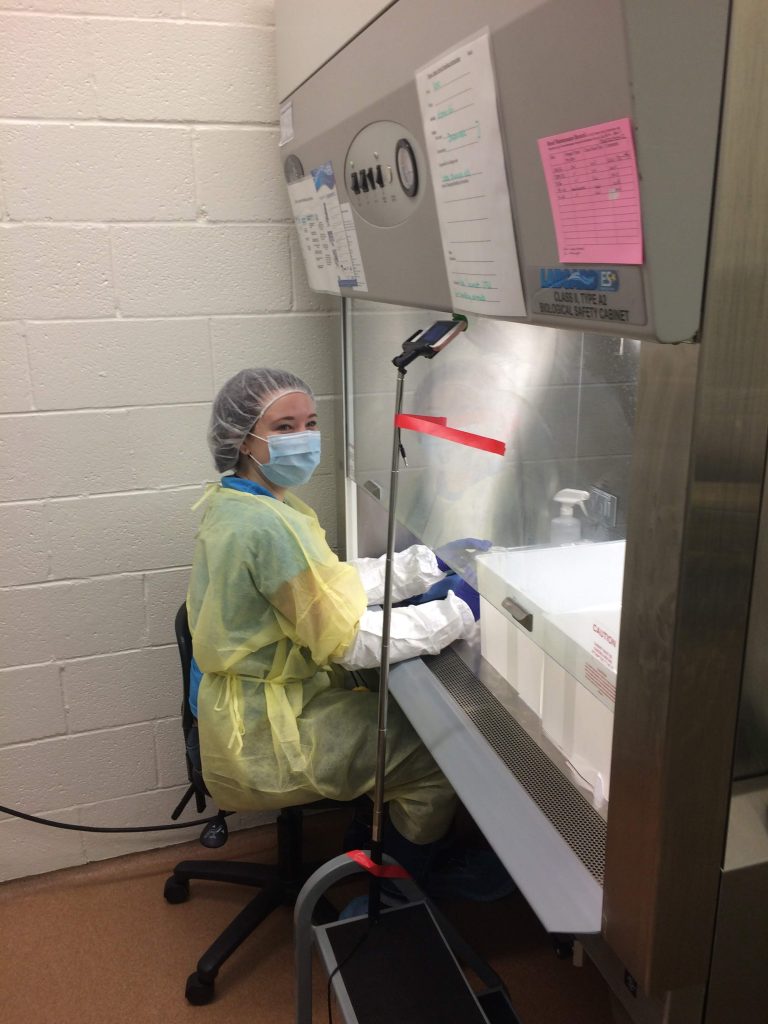In vitro fertilization (IVF) treatment is a procedure in which a woman’s mature eggs are removed via surgery, combined with sperm in a petri dish in a lab, and then the fertilized egg is placed in the uterus to continue growing into an embryo. Unfortunately, IVF is not covered by all insurance companies and is successful less than 50% of the time. Consequently, undergoing IVF can be a significant burden financially, physically, and emotionally for those who seek out this procedure.

What makes a “good” fertilizable egg? In this week’s special episode, we’re joined by Sweta Ravisankar, a 5th year PhD candidate in the Cell and Developmental Biology program at OHSU (Oregon Health & Science University), who is trying to answer this question in hopes that being able to screen for the “more likely to succeed” eggs, will lower the economic, financial, and physical hurtles of IVF.
Sweta works at the at Oregon National Primate Research Center, OHSU within the division of Reproductive and Developmental Sciences OHSU. She is a graduate student mentored jointly by Dr Shawn Chavez and Dr. Jon D. Hennebold.
The Hennebold lab studies reproduction before the egg is fertilized. This stage involves studying the female reproductive system, the oocyte (egg) itself, and the development of the follicle (region that holds the immature eggs) before ovulation (dropping of immature egg into the ovary). In contrast, the Chavez lab looks at what happens after fertilization such as chromosome abnormalities and how these abnormalities effect embryo development. This joint mentorship allows Sweta to study a more complete story of development.


Looking at reproduction from these two perspectives allows Sweta to correlate the environment the egg exists in with how the embryo develops. For example, what is the impact of a western style diet (high in fat) on the biochemistry and development of follicles and embryos long term? How does polycystic ovarian morphology (POM) mimicked by prolonged exposure to high fat diet and high testosterone levels in females impact reproductive success at the biomolecular level?

Being at the Oregon National Primate Center, Sweta’s model organism is the “Rhesus macaque” monkey. These monkeys have a genome ~97.5% similar to humans, meaning that the work she does is very relevant and translatable to humans. Working with the monkeys also means that her research is variable depending on the day. The monkeys will sometimes undergo treatments similar to those done in human IVF (in vitro fertilization) clinics, including surgeries to collect eggs for further research. After harvesting these eggs, they can be fertilized and the cells’ growth, division, and development can be monitored in a plate. When these experiments are not taking place, Sweta conducts various molecular biology experiments.

In India, Sweta completed her Bachelor’s degree at Dr. D. Y. Patil university in biotechnology and her first Master’s at SRM Institute of Science and Technology. During this time, Sweta happened to have several of family and friends undergoing IVF treatments and also worked in a fertility clinic for a time, bringing her attention to scientific needs within this field. Sweta then completed a second Master’s in Biological Sciences with a fellowship from the California Institute for Regenerative Medicine, and fell in love with fertility-related research during an internship at Stanford where she worked on embryo development. Her passion for this field of research led her to OHSU.
In addition to a being an accomplished researcher, Sweta is also an accomplished Indian Classical Dancer! She teaches bharatanatyam dance classes out of her home and travels around the US to perform. Long term, she hopes to continue research and also run a dance company.

Sweta will be presenting a piece on “depression” to work towards mental health awareness October 25th through 27th. The piece will be in Bharatanatyam and presented as a part of the 12th residency performance at N.E.W.
Sweta writes her own blog posts about her journey through grad school which can be found here:
- https://blogs.ohsu.edu/studentspeak/2017/09/11/it-is-possible-to-make-sad-not-even-seasonal/
- https://blogs.ohsu.edu/studentspeak/2018/07/24/phd-is-more-than-your-research/
- https://blogs.ohsu.edu/studentspeak/2019/04/18/never-give-up-there-is-a-bright-day-out-there-drudnischay/
To hear more about Sweta’s graduate work, personal struggles, and classical Indian dance moves, tune in on Sunday, October 20th at 7 PM on KBVR 88.7 FM, live stream the show at http://www.orangemedianetwork.com/kbvr_fm/, or download our podcast on iTunes!
























